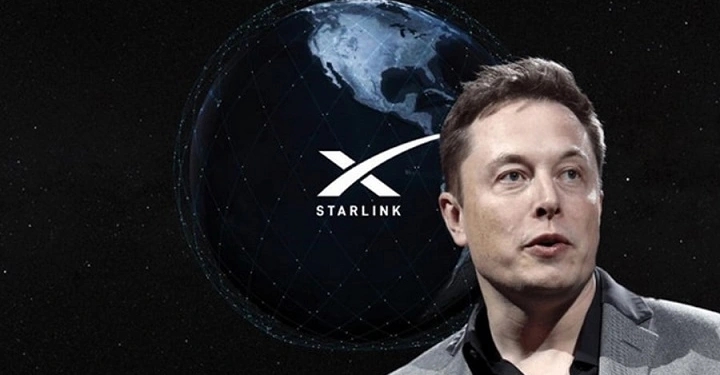Starlink, the ambitious internet venture spearheaded by Elon Musk, is setting the stage for a groundbreaking expansion.
The company recently unveiled its plans to offer services that will enable mobile phones to directly connect to its constellation of satellites. With this move, Starlink is poised to transform the global telecommunications landscape and provide ubiquitous connectivity, transcending geographic limitations.
According to information released by Starlink on its website, the service will be rolled out in phases. Texting services are scheduled for launch in 2024, while voice, data, and IoT (Internet of Things) services are expected to follow suit in 2025. Notably, one of the key highlights of this announcement is that consumers won’t be required to change their current 4G-enabled devices; Starlink’s innovative technology will seamlessly integrate with existing smartphones.

This bold move by Starlink involves the deployment of new satellites that function as telecom base stations. These satellites will provide communication services across the globe, essentially acting as mobile network towers in the sky. However, to offer this service in any given country, Starlink will need to secure a mobile operating license, which is a significant regulatory hurdle.
The vision of Starlink’s new proposition is to offer global access to communication services, transcending the limitations of existing terrestrial infrastructure. As stated by Starlink, “Starlink satellites with Direct to Cell capabilities enable ubiquitous access to texting, calling, and browsing wherever you may be on land, lakes, or coastal waters.” The innovative “Direct to Cell” technology works seamlessly with existing LTE phones and is compatible wherever there is a clear view of the sky. This means no alterations to phone hardware, firmware, or the need for special applications. Users will experience uninterrupted access to text, voice, and data services.
SpaceX, Elon Musk’s aerospace manufacturing and space transportation company, plays a pivotal role in bringing this vision to life. SpaceX’s extensive experience in manufacturing and launching advanced rockets and spacecraft positions it as the ideal partner to deploy Starlink satellites with “Direct to Cell” capability at scale. These satellites will be initially launched on SpaceX’s Falcon 9 rocket and later on the ambitious Starship spacecraft. Once in orbit, they will establish connections via laser backhaul to the Starlink constellation, ensuring global connectivity.
While Starlink’s move towards enabling direct mobile phone connectivity presents a paradigm shift in the telecommunications industry, it also opens up new opportunities and challenges. The company is actively promoting these capabilities to its business partners, paving the way for network integration akin to standard roaming agreements. This broad satellite coverage extends connectivity to remote regions where conventional cellular coverage may not be economically feasible.
However, it’s important to note that even with this revolutionary technology, Starlink will still need to navigate regulatory frameworks and obtain licenses in various countries, including Nigeria. In the United States, for instance, Starlink has already signed an agreement with T-Mobile, heralding a significant partnership. T-Mobile expects that this technology will extend text coverage to virtually all corners of the continental United States, including Hawaii, parts of Alaska, Puerto Rico, and territorial waters. This expansion is indicative of the far-reaching impact and broad applications of Starlink’s innovation.
In Canada, Rogers Communications has also ventured into this transformative territory by announcing satellite-to-phone coverage that will work seamlessly with all 5G and 4G smartphones once they become commercially available. Among the various applications, an emergency services upgrade via texting is specifically mentioned. A similar satellite service, known as Emergency SOS, is already available for iPhone users, further underlining the potential for revolutionary advancements in telecommunications.
The ramifications of Starlink’s ambitious foray into direct satellite connectivity with mobile devices are profound. It not only challenges the existing mobile telecommunication giants but also presents a significant leap in bridging connectivity gaps, particularly in remote and underserved regions. Furthermore, it underscores the need for regulatory adaptation and collaboration between space-based communication ventures and traditional telecommunications players. As Starlink advances toward its goal of global connectivity, it may very well redefine how the world connects and communicates, promising exciting new possibilities for the future of telecommunications.
Support InfoStride News' Credible Journalism: Only credible journalism can guarantee a fair, accountable and transparent society, including democracy and government. It involves a lot of efforts and money. We need your support. Click here to Donate
